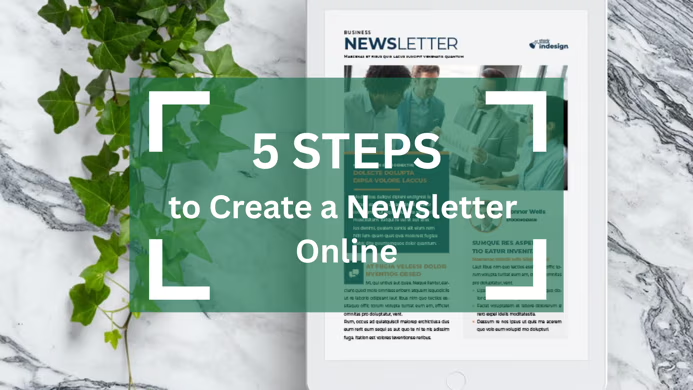In a world dominated by social algorithms and fleeting trends, email newsletters offer a rare opportunity: direct, personal access to your audience’s attention. Whether you’re a small business owner, content creator, nonprofit, or niche expert, newsletters let you build loyalty, share value, and drive real results.
But great newsletters don’t just happen. Behind every successful send is a thoughtful mix of storytelling, design, automation — and the right tools to pull it all together. If you’re ready to level up your newsletter game without blowing your budget, here are smart, affordable online tools (plus a bonus FAQ!) to get you started.
1. MailerLite: The Simplicity Powerhouse
For those who want ease of use without sacrificing professional polish, MailerLite is a standout. Its drag-and-drop editor makes it easy to design beautiful emails, even if you’ve never touched code. You can set up welcome sequences, segment your list, and track performance — all from an intuitive dashboard.
MailerLite offers a generous free tier and is perfect for creators or startups sending under 12,000 emails per month. Plus, its clean templates and automation options help your emails look sharp and stay timely.
2. Bee: Create Templates That Truly Buzz
Bee is a no-signup-needed design tool that lets you build responsive email templates in your browser. It’s great for marketers or teams who want more creative control before plugging designs into their email service provider.
Once finished, you can export your design as HTML and upload it to most major platforms. It’s especially helpful for agencies or freelancers who build client-ready templates but don’t want to be tied to one software provider.
3. Kit: Built for Creators, Trusted by Experts
Kit is designed with bloggers, YouTubers, and creative entrepreneurs in mind. Its streamlined interface lets you tag subscribers based on interests or behavior, helping you send more personalized emails without complexity.
The platform also offers lead magnet tools, landing pages, and even paid newsletter options. If you’re building a brand while building your list, Kit is a powerful ally.
4. Benchmark Email: Clean, Simple, Reliable
Benchmark Email offers a clean design experience with strong reporting and automation. Their editor is particularly beginner-friendly, and templates are optimized for mobile from the start.
It’s a great option for small businesses or nonprofits who want something professional but don’t have time to dive deep into tech. Plus, you can A/B test subject lines and track performance without being overwhelmed by analytics.
5. Unsplash + Pexels: Free Visual Goldmines
Every great newsletter needs visual flair. Platforms like Unsplash and Pexels offer high-quality royalty-free images that you can use to enhance your message. Whether it’s a banner image, visual quote, or product shot, these tools make it easy to stay on-brand and beautiful.
Just remember: visuals should always serve your message — not distract from it. Use images to highlight sections, break up long text, or reinforce a mood.
6. Stripo: Code-Optional Power for Advanced Design
Stripo lets you create dynamic, interactive emails with embedded elements like image carousels or countdown timers — all without needing to write much code. You can design once, test responsiveness, and export to over 70 ESPs (email service providers).
It’s ideal for marketers who want to push beyond basic formats or developers who need speed. Use Stripo to experiment with modern newsletter styles and keep readers engaged with fresh formats.
📊 FAQ: Using Infographics to Boost Newsletter Engagement
Strong newsletters deliver more than just text — they offer visual clarity and value. One of the most effective (and underused) methods for keeping your readers interested is infographic design. Below are some frequently asked questions to help you start integrating infographics into your emails in a smart, strategic way.
Q1: Why should I include infographics in my newsletter?
Infographics help distill complex information into digestible visuals. If you’re sharing data, comparisons, timelines, or step-by-step guides, a well-designed infographic can increase understanding and retention — and make your email more scannable.
Q2: What’s an easy tool to design an infographic without graphic design experience?
Adobe Express offers a free infographic creator that makes it easy to build professional-looking visuals. Choose from pre-made layouts, drag and drop icons, and customize colors to match your brand — all within a user-friendly interface.
Q3: Should I embed the infographic in the email or link to it?
You can do either, depending on the complexity of your design. For short infographics, embed them as images directly in your newsletter. For longer, scrollable ones, consider hosting it on your site or a landing page and linking with a teaser preview in the email.
Q4: How often should I use infographics in newsletters?
Use them strategically — not in every send. Infographics are most effective when explaining a process, summarizing survey results, or sharing statistics. If every email has one, it may lose its impact. Consider using them monthly or during campaign launches.
Q5: Can I repurpose newsletter infographics for social media or blogs?
Absolutely! One of the biggest advantages of creating infographics is repurposability. Once you’ve designed it, you can resize or crop sections for Instagram, share it as a carousel on LinkedIn, or embed it in blog posts for SEO and readability.
Creating a newsletter isn’t just about checking in with your audience — it’s about delivering consistent, high-value experiences that build trust. With the right tools, you don’t need a big team or a design background to make it happen. Whether you’re just launching or scaling your list, these online platforms offer the flexibility, affordability, and polish to help you grow.
So go ahead — choose one new tool from this list, test a small improvement, and watch your engagement (and confidence) rise.
